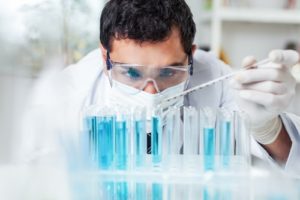Researchers at the University of Texas Southwestern Medical Center have successfully increased the ability of nerve cells to regenerate in the spinal cords of in adult mice. Despite their small size, these mice are evidence of a major advancement in the treatment of adult humans with spinal cord injuries.
Injury to the spinal cord can occur as a result of injury, trauma, or illness, and may cause death or permanent disability, like paralysis and sensory impairment.
Patients with spinal cord injuries experience many additional health issues besides just a loss of motor functions. Spinal cord injury patients typically have higher blood pressure and an increased risk of developing blood clots. The digestive and excretory systems are also impacted, and patients have a higher chance of developing bladder and bowel cancer. Many spinal cord injury patients experience depression, poor quality of life, and economic hardships, and are twice as likely to die earlier than people without spinal cord injuries.
The study, which was published in the October edition of Cell Reports, explains the molecular and cellular markers that play a large part in cell regeneration. These markers were manipulated in adult mice during the study.
Researchers focused on specific cells called glial cells. These cells are found in both the brain and spinal cord but are not nerve cells. The role of the glial cells is to support and protect the nerve cells found in the central nervous system. Glial cells also make up the myelin, a fatty substance that insulates some nerve cells. Myelin is a critical component for the proper functioning of nerve cells.
Spinal regeneration research at UTSW Medical Center has been underway for a few years, beginning with work that created new cells in the brains and spinal cords of mice in 2013. By using transcription factors, researchers were able to manipulate adult glial cells to resemble basic stem cells. Transcription factors are proteins that control how DNA is copied, or transcripts, into RNA during cell generation. Once these glial cells resembled basic stem cells, researchers were able to encourage them into becoming spinal nerve cells.
Early testing yielded low numbers of new spinal cells. Looking to increase production, UTSW researchers began to look for new ways to increase their numbers. Earlier this year, they did just that by refining the cell programming process and adding growth factors to boost regeneration. These growth factors, which exist naturally in the body, have many functions in the body. Some growth factors contribute to new nerve cell growth, prevent nerve cell death, and may play an important role in cognition.
During their research, clinicians also identified markers in nerve cells to show communication between cells and the forming of nerve cell networks.
While the UTSW research on spinal regeneration is an advancement in spinal cord injury treatment in mice, using glial cells to treat humans with spinal cord injuries has not been proven a successful therapy yet. But there are others for spinal cord and nerve injuries, says Dr. Bill Johnson, M.D. Johnson is a Dallas, Texas, physician who uses stem cells found in adipose fat tissue to treat spinal cord injuries along with many other conditions.
In treatments that use adipose stem cells or ASCs, the fat is extracted from the patient through liposuction, refined and manipulated to look like other stem cells and the stem cells are removed from the adult fat. Once the cells resemble stem cells of the tissue to be treated, like the spinal cord, Next the stem cells are reintroduced into the body through injection or IV therapy.
“Adipose fat cells are ideal for stem cell therapies for a few reasons. The first reason is that they are abundant,” says Johnson. Another reason Johnson prefers adipose fat cells for his treatment is that they can be modified to look like other cells fairly easy. “Adipose fat cells are made up of mesenchymal stem cells. These cells form the body’s connective tissue, circulatory system, bones, and muscle. Because of this, they can help treat many conditions that occur throughout the body – from joints to nerves,” he explains. Other benefits include the fact that these cells are easy to harvest, and because they come directly from the patient’s body, there is no chance of rejection.
Johnson uses fat stem cell therapy to treat a wide range of conditions ranging from osteoarthritis to erectile dysfunction in his stem cell clinic. “We are seeing positive results with many diseases and conditions, in patients that have suffered a lifetime of pain.”

